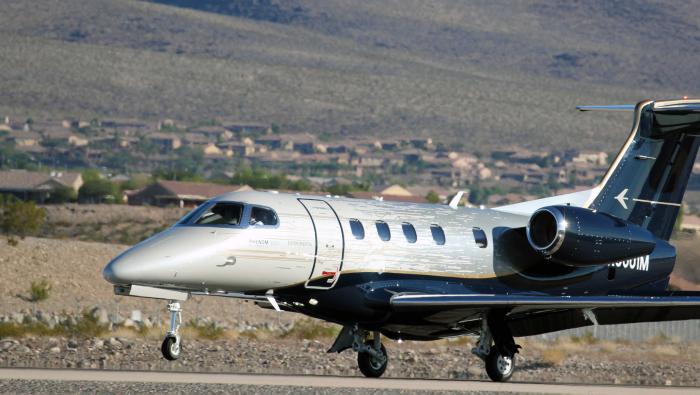Aerion Corp.’s U.S. manufacturing location for its Mach 1.5 AS2 business jet will likely be on the East or West Coast, within 200 nm of an offshore supersonic flight test area, co-chairman Brian Barents said on Monday here at NBAA 2015. The company expects to announce the location of the assembly site in the first half of next year upon formal launch of the AS2 program and break ground on the facility in 2018.
“Aerion has begun a formal search for a U.S. manufacturing location,” said CEO Doug Nichols. “We’re looking for a state-of-the art campus of more than 100 acres on a major airport with a minimum 9,000-foot runway and other special geophysical requirements.” The Reno, Nev.-based company will also evaluate other factors, including airport suitability; road and rail infrastructure; proximity to a deep-water port for shipped structures and equipment; local aerospace workforce; state and local regulations; quality of life; and regional educational institutions.
Partner Airbus Group will provide major components for the AS2, while Aerion will conduct final assembly. Both companies envision a “long-term relationship” for ongoing technical support.
With joint engineering efforts accelerating on the AS2, Aerion and Airbus Group also announced a new agreement on Monday that will expand North American-based Airbus Group resources to the AS2 program. Support from Airbus Group operations in North America will include engineering, procurement and supply chain management, logistics planning, program management and government relations. These new resources will augment engineering support from Airbus Defense and Space in Spain.
“The collaboration between Aerion and Airbus Group has been extremely beneficial and productive,” said Airbus Group chairman and CEO Allan McArtor. “The further we proceed along the development path with Aerion, the greater our enthusiasm for this program and the deeper our commitment. Under our new agreement, our two companies are working as one to bring Aerion’s supersonic AS2 to the business jet market.”
Since their collaboration was announced last year, Aerion and Airbus have made steady progress on maturing the AS2’s design. Airbus Defense and Space has made significant progress in the engineering of airframe structures, the AS2’s fly-by-wire (FBW) flight control system, integrated fuel system and landing gear, according to Aerion.
Preliminary designs completed by Aerion and Airbus include a strong and light 10-spar carbon-fiber wing structure; fuselage and empennage structures; articulating main landing gear system that minimizes space when stowed/retracted; fuel system that is integrated with the digital fly-by-wire (FBW) flight control system for control of center of gravity; small, powerful actuators that can be housed in the AS2’s thin flying surfaces; and the FBW system.
To supplement the design process, Airbus Defense and Space has built a sample titanium wing leading-edge section for evaluation and is testing composite material specimens to optimize material properties. Aerion is the lead for other systems, such as avionics, electrical, environmental control, hydraulics and auxiliary power. Candidate suppliers have been identified and the supplier selection process is under way.
In September, the two companies conducted a four-day joint engineering design review on all AS2 structures and aircraft systems. “We see clear and achievable technical solutions to the design of a supersonic jet, and a realistic roadmap for helping Aerion proceed toward construction and flight,” said Airbus Group senior vice president for strategy and corporate development Ken McKenzie. Aerion senior vice president for aircraft development Mike Hinderberger added, “We have moved out of the conceptual design phase into commercializing Aerion technology.”
Aerion (Booth C9429) will not be announcing a powerplant selection for the AS2 trijet this week here in Las Vegas. It is now targeting the first half of next year to make this decision, enabling the company to formally launch the program “shortly thereafter.”
Existing core engines suitable for adaptation to the needs of supersonic flight have already been identified by the hopeful SSBJ manufacturer. “We will proceed with an engine that allows us to meet our performance goals with the minimum changes required,” Nichols noted. “Aerion is focused on an engine solution that meets Stage 4 noise standards while preserving long-range supersonic performance. This is a significant challenge with a low-bypass supersonic engine, but solutions are in sight with today’s engine technology.”
Aerion is shooting for first flight of the $120 million AS2 in 2021 and entry into service in 2023, following FAA certification. EASA certification would soon follow, the company said.







